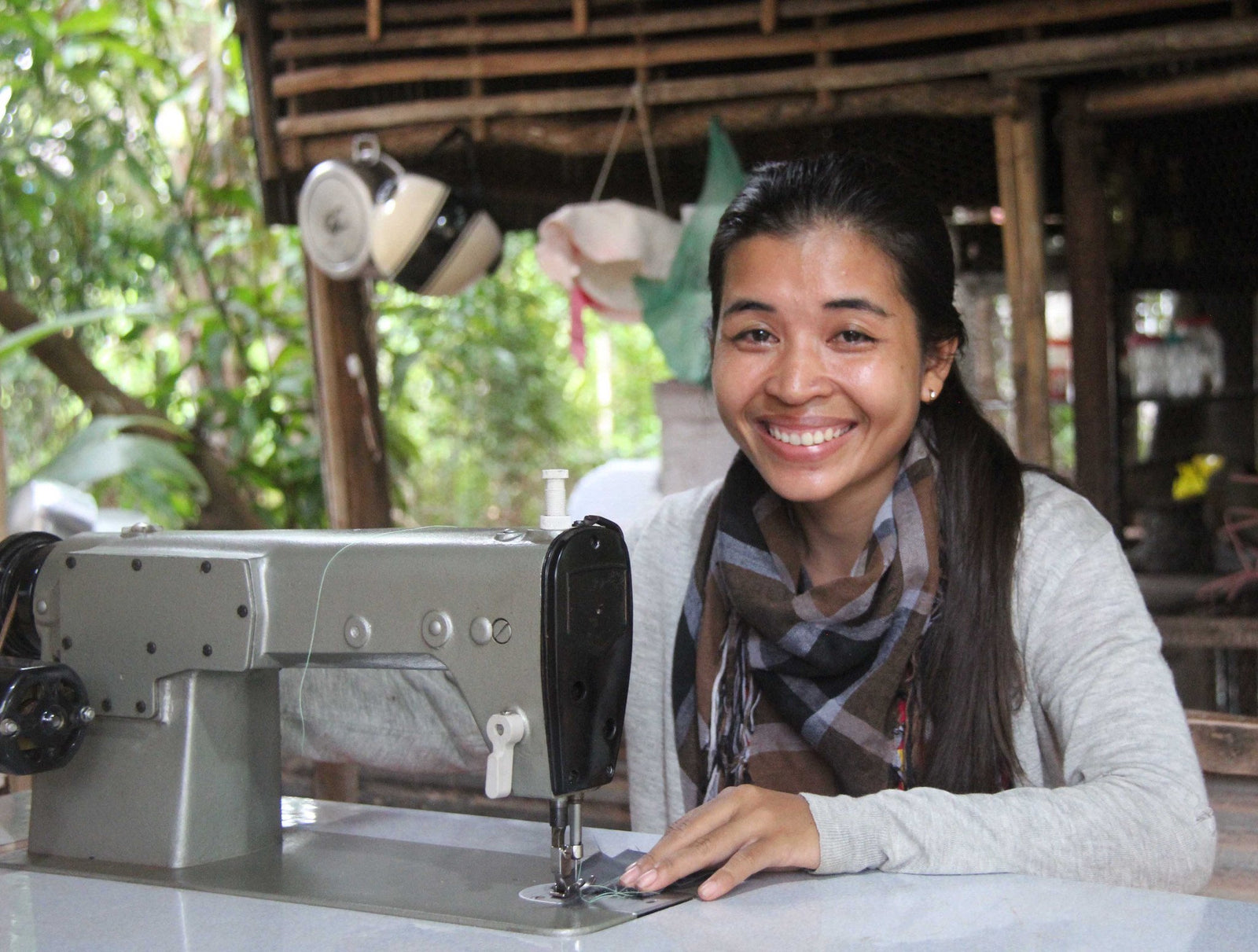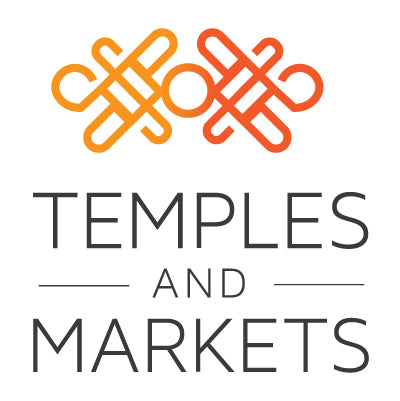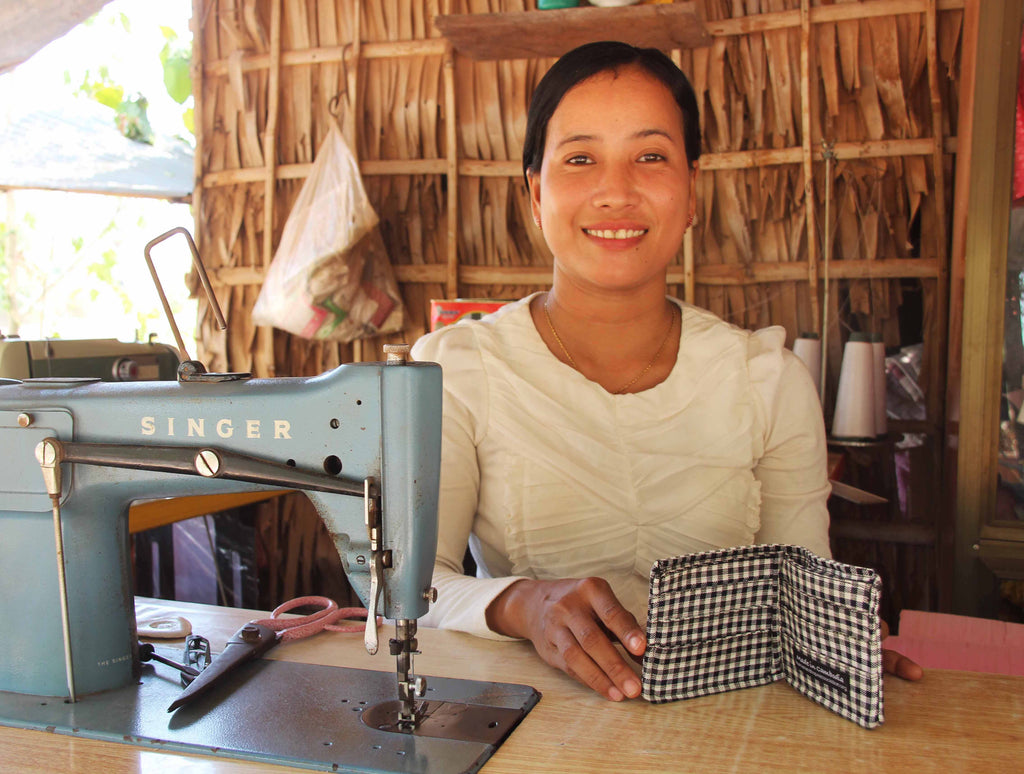ETHICAL CURATED LIFESTYLE STORE.
ETHICAL CURATED LIFESTYLE STORE.
Women
JEWELLERY
Homewares
SHOP BY BRAND OR LOCATION
Shop By Gift Guides

Empowering Cambodian Women out of Poverty, the Human and Hope Way
October 18, 2016 8 min read
Sally Hetherington, President of the Board at the Human and Hope Association, gives us an in depth look at how their Sewing Program has changed lives in Siem Reap, Cambodia
Established in 2013, the sewing program at Human and Hope Association in Siem Reap, Cambodia, aimed to address the lack of skills and education in our community that kept villagers in poverty. It was initially set up with a fundraiser for my birthday; $1,500 managed to get us five sewing machines, some chairs, a cabinet and sewing supplies for the first semester. The next step wasn’t so easy. We had to go out into the community and convince women that studying for four months was worth their time, and we also had to convince their husbands and parents, too.
Learn more about Temples and Markets working with social enterprises
Saney with Human and Hope Association’s men’s wallet. These wallets are available to purchase in this store.
Eventually we recruited enough students for a morning and afternoon class and the program started. It was a bumpy ride. We provide the students with a stipend of $15USD a month and three hours of sewing training, five days a week. We lost three of our students along the way; they were forced by their families to stop studying and work instead, as they were unable to see the benefit of studying for four months. They wanted money, and they wanted it immediately.
After four months, our first semester finished, and we had seven students graduate from the program. Although they were all offered the opportunity to take out microfinance loans so they could purchase sewing machines and set up small businesses at home, only two did. One of those ladies (a 17-year-old girl at the time), was also hired to be our sewing assistant. She remains working at Human and Hope Association today as a sewing teacher, empowering others to move out of poverty just as she did.

Saney taking measurements for school uniforms.
The next semester I was determined to improve the program. We were all new to it, but I knew how much potential this program had to move people out of poverty. We stopped the monetary stipend and instead began providing 1kg of rice each day for the students, to ensure their families were well-fed. We also initiated weekly life skills lessons, focusing on topics to address social issues such as hygiene, domestic violence and business skills.
Then I came across a lady in the program named Saney. She had found out about the program through her neighbor who had graduated in our first semester. Saney’s husband initially didn’t want her to study, however with persistence, he gave her permission. We hired Saney to be a seamstress in a trial of our sewing business. She made shoulder bags, elephants and make up bands, which were put into shops around Siem Reap and sent to Australia to gauge interest. Saney’s quality was so great that we hired her to be our seamstress. But I didn’t want it to stop there. I realized that there would be more motivated, determined students like Saney, and our four month sewing program wasn’t enough. So we added on an extra semester, teaching further sewing skills such as tailored shirts and homewares. But that wasn’t enough. Towards the end of the extra semester, I was seeing that Saney and some of the students were developing successful businesses at their homes, and I wanted to ensure they had a competitive advantage in the market. So we added one more semester, an ‘expert’ semester, teaching the students how to make traditional and elaborate ceremony dresses. And then, that was it. They graduated.

Saney (middle) with fellow students in our first expert class graduation. Phalla, who is a current sewing teacher at HHA, is on the right.
Saney now has a successful business at her home, and her customer base has increased so much that she recently resigned as our seamstress, giving the opportunity to another student, Sangorb. Our last assessment has placed Saney almost out of the poverty bracket. She says, “My husband respects me now and often comments that I can earn much more money than him. My future is much brighter because of HHA.”
Since Saney graduated, we have continued to develop the sewing program. Our students continue to receive a stipend for studying, however it has changed. Three days a week they receive 1kg of rice daily and two days a week they receive vegetables. These vegetables are grown in our student farm, with our sewing students tending to the garden daily, learning about chemical-free farming and having direct input about how to manage the farm.

We recently provided four more microfinance loans to our beginner sewing students.
After studying in the program for three months our students have the opportunity to take out a microfinance loan with us. They purchase a machine to practice their lessons at home and begin fixing and making clothes for their neighbours. They begin repayments six months after first receiving the machine so we can ensure they are confident in their ability and are not pressured to pay back their loans straight away.
Upon graduating, armed with a diverse set of skills, our students seek employment in sewing shops, run sewing businesses from their homes or are hired by us to make products. We continue to provide workshops and refresher lessons for them every month for five months after they graduate. Our handicrafts, such as toys, homewares and accessories are made from traditional Khmer fabric and are sold around Siem Reap and in Australia through Human and Hope Association Incorporated. We also make wholesale orders for businesses, with the profits are used to support the operations of Human and Hope Association.
Our sewing program is so much more than just teaching women how to sew; it increases their safety and security and ensures they become good role models for other women and girls in our community.

Sangorb taking care of the sewing student’s farm at Human and Hope Association.
Take for example, Sangorb, a current sewing student who was hired to replace Saney as our seamstress. Sangorb only studied until grade two as her parents forced her to stop studying so she could raise cows. At the age of 13 she began working as a builder and in her free time collected rattan to make baskets.
When she was 20, Sangorb had an arranged marriage and soon after, had a child. Sangorb stayed at home, looking after her child, doing housework and growing vegetables. One day, when conducting community outreach, our team at Human and Hope Association met Sangorb and told her about the sewing program. Although she was interested, she had an ongoing bad rash which was going to prevent her from studying. Our staff told her about an NGO that provided free health care service, and as a result her rash was cured and she was able to study with us. 
Sangorb at her house, where she has a small sewing business.
After studying for three months, Sangorb took out a microfinance loan and purchased a sewing machine. She was hired to be our seamstress, and as a result is earning a stable income from us in addition to fixing and making clothes for her neighbours. Sangorb says, “I never imagined that I could do good job with my sewing skill because I cannot write and read Khmer at all. However, now I am a seamstress and earning money. My husband is also happy to see that I can earn an income and now we don’t have as many arguments as before.”
For those students who stick with the sewing program, there are great outcomes. This year, for the very first time, we have had no drop-outs. This is because we have created a stricter contract which encourages villagers to think seriously before signing up to the program, and involves their families.
Within three years of graduating from our sewing program, we expect our students’ standard of living to increase. We have already seen this with some of our graduated sewing students making improvements to their existing houses, moving out from their extended families or building more stable houses.

A beginner sewing student with her sister, who studies in our Khmer language program.
A study by UNICEF (2013) concluded that raising household income has more of an effect on a child’s education than investing in schools. With this, we can determine that the children of our students will be impacted as they are more likely to remain in education as their mothers have the money to support them and understand the importance of investing in education. They are also less willing to drop out of school if they are asked to help earn money for the family.
With a stable income comes a happier family. Although men are typically the breadwinners in Cambodia, once the students in our program start earning an income, their husbands tend to treat them with more respect (as we have seen in the cases of Saney and Sangorb) which results in a reduction in verbal and physical abuse, a more supportive relationship, and a better care system for their children.
Our child protection workshops result in less emotional and physical trauma on the children of our sewing students. We have seen that when children in Cambodia are abused they lose their confidence, are generally on edge and have difficulty forming trusting relationships. This abuse then tends to be passed down from generation to generation. With reduced/eliminated abuse of children, we can break this abusive cycle in our community.

Chomrong, our seamstress, with her son. Chomrong makes our products and was recently promoted to be our sewing teacher. Two of her children study in the education program at Human and Hope Association. Chomrong is now building a new house with her income.
The health of our students and their families is also improved as a result of our hygiene workshops, resulting in lower risks of illnesses, disease and costly hospital bills. Many farmers in Cambodia use dangerous chemicals that are outlawed in other countries when they farm their vegetables, resulting in serious health risks for farmers and those who eat the vegetables. As we educate our students about the effects of these chemicals, and have them take care of their own chemical-free farm at HHA, they no longer focus on purchasing the cheapest vegetables, they are concerned about their health and will buy organic vegetables, reducing the health risks for their families and the danger of being thrust further into poverty by illnesses.
As our students gain more experience with their own businesses or their external employment, their confidence and business skills are likely to further develop. This in turn results in an increase in business/salaries, and helps them move out of the poverty bracket altogether.

Proud students at their beginner sewing class graduation
As time goes by, the wider community are beginning to see women as worthy of respect. This will increase the opportunities for girls and women in the future, and lead to a growth in females being education, resulting in a safer place for strong, independent women.
It costs $90AUD a month to provide sewing training to a marginalized woman in Cambodia. Become a Sewing Champion today and change a life.
Purchase handicrafts made by Human and Hope Association’s seamstresses here, and contribute to the empowerment of women and the education of children.
Leave a comment
Comments will be approved before showing up.
Subscribe
Sign up to get the latest on sales, new releases and more …

